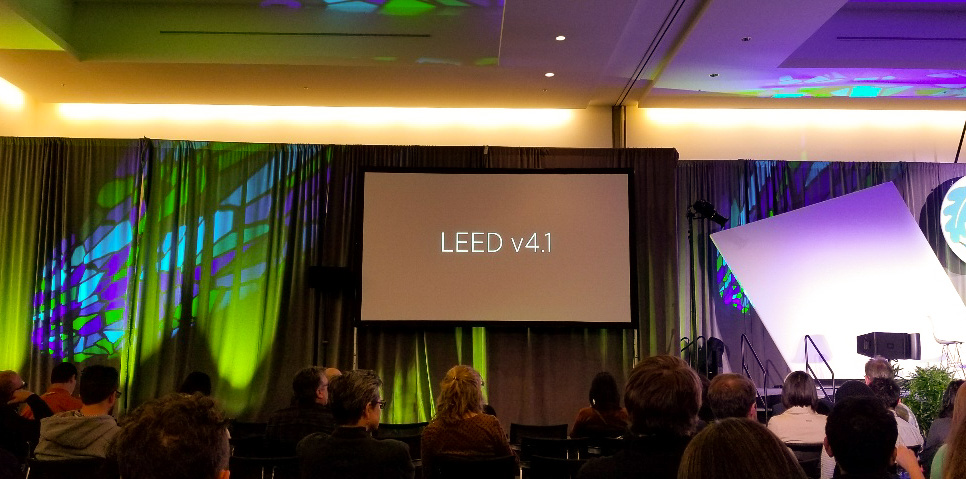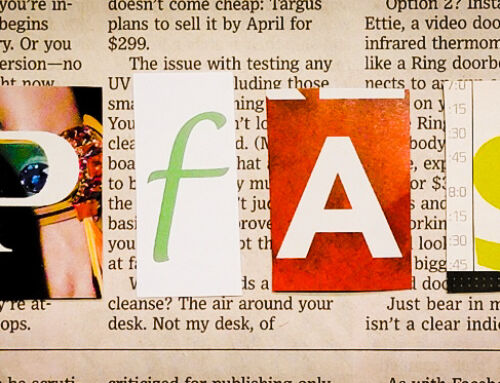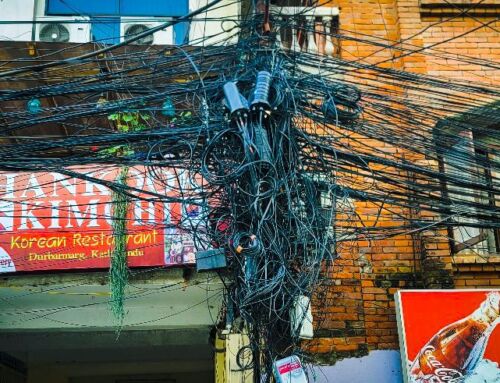View by Topic
Recent Articles
-
EPA Designates PFOA and PFOS as Hazardous Substances under Superfund LawSaturday, April 20th, 2024
-
Federal Government Finalizes New Efficiency Standards for LightbulbsSaturday, April 13th, 2024
-
2024 IECC is Final After Addressing Preemption IssuesSaturday, April 6th, 2024
-
Settlement Portends Broad Failure in Attempts to Ban Natural GasSaturday, March 30th, 2024
-
SEC Climate Disclosure Rule Stay and Venue Now in the 8th CircuitSaturday, March 23rd, 2024
View by Month/Year
“Green Building Law Update” Headlines
Recent Articles & News from
Stuart Kaplow’s blog
at GreenBuildingLawUpdate.com
- EPA Takes Action: PFOA and PFOS Now Hazardous Substances Under Superfund Law April 21, 2024
- Shedding Light on the Future: The Evolution of Lightbulbs in the Wake of New Energy Efficiency Standards April 14, 2024
- 2024 International Energy Conservation Code is Final After Addressing Preemption April 7, 2024
- Settlement Portends Broad Failure in Attempts to Ban Natural Gas March 31, 2024
Subscribe to the Green Building Law Update!
Stuart Kaplow brings his expertise and extensive experience to the table with his unique digital publication, "Green Building Law Update". Subscribers receive regular updates to keep them informed about important issues surrounding Environmental Law, Green Building & Real Estate Law, as well as the emerging demand for Environmental Social Governance (ESG).
Get fresh content through the lense of Stuart Kaplow's cutting-edge expertise, innovative commentary and insider perspective. Don't miss another issue! Subscribe below.

LEED v4.1 Announced by USGBC at Greenbuild
The announcement of the upcoming release of the new LEED version 4.1 by the U.S. Green Building Council was no doubt the biggest story at Greenbuild 2017 in Boston last week.
And that is saying a lot because Greenbuild is the world’s largest conference and expo dedicated to green building and there was much to be excited about in the aisles of the expo floor.
But when USGBC announces a new version of the most widely used green building rating system in the world, that certifies 2.2 million square feet daily and has more than 92,000 participating projects in more than 165 countries and territories, it is big deal.
That LEED v4, originally released as LEED 2012, is growing and changing in response to the marketplace is widely heralded as a very good and necessary thing.
Beginning in November 1, 2013 projects had the option of registering under LEED v2009 or LEED v4. And beginning November 1, 2016, new LEED projects had to register under v4. Despite that passage of time there are not a large number of certified v4 projects and a very modest number of new construction v4 building in the U.S.
The “existing credit requirements” in LEED v4 are the foundation of the changes. This is not a full version change of the rating system, but rather it being described as “the next evolution” of the rating system, hence the nomenclature of moving from v4 to v4.1 and not v5 (.. development is underway on the next full version of LEED in collaboration with the creators of the already approved ASHARE 189.1- 2018 and the 2018 IgCC).
There is much that is not known because many decisions about LEED v4.1 are yet to be made and nothing has yet been released in writing, but this blog post is based upon the best information that could be gleaned from USGBC staffers as of last Friday. It is quite likely that some of this will change and there will no doubt be much more to come. Here are the key facts as we now know them:
The technical development work has been under way on a new version of the rating systems that will be known as LEED v4.1.
Version 4.1 will be released in first quarter 2018 and credits will be immediately available for use through a piloting period that will run concurrently with an approval process that will include public comment and a balloting of the members in 2019.
Initially, v4 and v4.1 will both exist on parallel tracts at least until the vote by the members.
LEED v4.1 O+M Building Operations and Maintenance will be released earlier, again through piloting available for use (hopefully) before the end of January 2018. But there are still some final decisions to be made to this rating system “that will see the most change” and be expanded to a larger share of the market. No final determination has been yet made on the much discussed concept of removing prerequisites for O+M projects and the possibility of O+M interior spaces as opposed to the current whole building only.
Among the four goals of this next evolution of the rating system, as described by USGBC staff, is to “address market barriers and lessons learned from v4 projects teams.” As part of the technical development process staff quantified the percent of all LEED BD+C v4 projects that earned each credit. That work, including highlighting those credits that were little achieved, which is the basis of the changes that will be LEED v4.1, can be accomplished on this short timeline because it is being tasked to the same leadership and team that drafted v4.
The largest number of changes will be in the Materials And Resources category. MR Credit: Building Life-Cycle Impact Reduction is very paperwork intensive and little achieved, only in 27% of projects, in part because with only option 4 of the credit available to new construction and the iterative modeling required arguably having limited true environmental efficacy, the credit will be revamped. MR Credit: Building Product Disclosure and Optimization – EPDs is perceived as having resulted in “tremendous movement” in green building, but has not been widely accepted in the marketplace and should see dramatic change away from USGBC promulgated EPDs to globally accepted standard EPDs. MR Credit: Building Product Disclosure and Optimization – Sourcing of Raw Materials option one under the credit requiring using at least 20 different products with an extraction report has never been achieved and option two is little achieved; and will see change. MR Credit: Building Product Disclosure and Optimization – Materials Ingredients, was only achieved in 17% of projects (the lowest rate of achievement of any credit), which will result in a serious reconsideration of the whole topic of material ingredients.
There are also changes proposed in the Sustainable Sites category. Only 24% of projects achieved the SS Credit: Site Development – Protect or Restore Habitat and that credit is being revamped. SS Credit: Rainwater Management is also little achieved and despite the concept of storm water management being widely accepted it is clear that the current credit does not capture current best practices often ensconced in law.
The Indoor Environmental Quality category will also see improvements. Despite that EQ Credit: Low-Emitting Materials has been achieved on 75% of projects, it will be streamlined. EQ Credit: Indoor Air Quality Assessment, despite being the second most often achieved credit, on 89% of projects, is achieved under the credits option one that is a building flush-out while not a single project has achieved option two which requires actual testing of 32 parameters that is too expensive if even available; and will be updated. EQ Credit: Daylight is only achieved ion 31% of projects and is being changed. The EQ Credit: Acoustic Performance ties as the least achieved credit, at only 17% of projects, and simply does not reflect where the market is, and will be changed.
The second goal is to “update the performance requirements” in the Energy And Atmosphere category, but there is a real debate to be had if this is actually accomplished by simply ratchetting up the prerequisites (including the almost certain move from the reference ASHRAE Standard 90.1 – 2010 to 90.1 – 2103) or if that move simply eliminates projects from qualifying for LEED and possibly the better change is to move away from energy cost savings to some other metric? EA Credit: Renewable Energy Production has only been achieved on 41% of projects and will be updated. EA Credit: Green Power And Carbon Offsets is also being changed.
Which is closely related to the third stated goal of this next evolution of the rating system, “expand the marketplace for LEED.” For example EA Credit: Demand Response has only been achieved on 20% of projects and is being looked at again and will be changed because there are simply so many places that the electric power utility does not offer Demand Response. And similarly EA Credit: Green Power And Carbon Offsets, which is largely tied to Green-e, is not available in many markets. And despite that Location And Transportation category LT Credit: Sensitive Land Protection was achieved on 79% of projects, it simply cannot be achieved at all locations, and it will be changed. Six new international advisory councils are being convened to harmonize credits across the globe (similar to Regional Priority Credits aimed to be in the U.S.) with national codes and local best practices.
And the last articulated of the four goals of this updated rating system is to “improve performance through the life of buildings.” This will largely involve aligning the credits, including underlying metric, across all rating systems, including LEED Neighborhood Development and the Cities program, as well as describing alignments with PEER (version 2.0 to be released in first quarter 2018), WELL and SITES. As part of this work all of the residential rating systems will become one program and, possibly burying the lead, this will include an “updating of the single family home” rating system.
Moreover, “Arc is now fully available as a platform to support projects as they track energy, water, waste transportation and human experience.”
We suggest this is what innovation looks like.
Follow this blog for more and additional information on LEED v4.1 as the most widely used green building rating system in the world adopts a new version. And if we can assist you with your v4.1 project or other green building work do not hesitate to email Stuart Kaplow.









